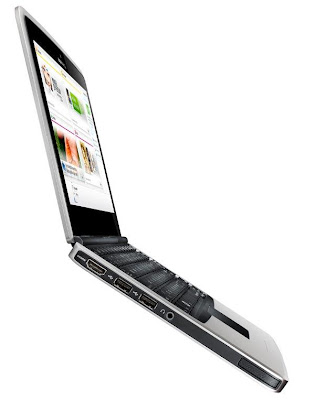 Nokia bets on an entire series of text message-based services for India. This is a approach difference from Nokia. The idea is to be customer-driven, not just technology-driven. While it’s not flashy, but it is smart.
Nokia bets on an entire series of text message-based services for India. This is a approach difference from Nokia. The idea is to be customer-driven, not just technology-driven. While it’s not flashy, but it is smart. Nokia Life Tools enabled “We Meet” social networking will not require the user to have any data/GPRS plans for connecting to friends and networking around. The application specifically developed for Indian markets bypasses GPRS connection, which is still a prohibitively costly option in India and allows one to chat/IM through text messages. While IM is available to users through Telcos/ Chat portals, “We Meet” differentiates itself by software “threading” the messages in chronological order, making it easy to follow the conversation. The effect is something like an instant messaging conversation, but at the fraction of the cost and on devices with no data plans. We Meet is also designed to be location-aware. But instead of pricey GPS, which is typically found only in high-end phones, it tracks people’s location via towers. The system works because, in India, operators give cell towers geographic names. even low-end phones can detect the basic vicinity of specified contacts and display the information in the form of a word or phrase. When people move, the location updates. “It’s not a digital map, but it serves the same function.

Nokia is also organizing a mobile texting based marketplace. Called “MoMart” for “mobile mart,” it consists of product listings delivered by text message. Interested buyers would subscribe to the service and specify the goods they want; the program would then push matches directly to their phones. Listings could be text-only or include an image embedded into the message. They could also be targeted to particular areas using cell-tower location technology, enabling buyers and sellers to meet in person. The programs run on Nokia’s Series 40 software platform, giving them a potential audience of hundreds of millions of phones.
Nokia has some experience it can reference. Last November, the company introduced a set of mobile programs called “Life Tools” that provided agricultural information and educational material to people in rural areas. Life Tools routes information to users via text message and was tested in India before being publicly released. However MoMart and WeMeet target urban users and encourage people to communicate with each other, not just consume content pushed to their phones.
Naturally, there’s an end game to all this work. Nokia hopes users will get hooked on doing more with their phones. Consumers who sign up for his apps will be more likely to adopt data plans in the future. When data plans become mass market, these users can easily transition.



 The problem with this idea seems to be that, it belonged as part of something bigger, not as a standalone site. There is too much social capital that is required for yet another “community” website. One single purpose did not warrant another log on, another bit of data input. The idea was nicely executed, however, but not compelling enough on its own. The flip of this is that Dopplr may add up to Nokia’s world well and would get the threshold volume it always lagged.
The problem with this idea seems to be that, it belonged as part of something bigger, not as a standalone site. There is too much social capital that is required for yet another “community” website. One single purpose did not warrant another log on, another bit of data input. The idea was nicely executed, however, but not compelling enough on its own. The flip of this is that Dopplr may add up to Nokia’s world well and would get the threshold volume it always lagged.

 Overall, it remains to be seen, whether Booklet 3G becomes popular. But at this point it does not seem to be a successful return of Nokia to the world of x86-based personal computers. Instead, Booklet 3G looks like a test vehicle to investigate the needs of Nokia’s clients.
Overall, it remains to be seen, whether Booklet 3G becomes popular. But at this point it does not seem to be a successful return of Nokia to the world of x86-based personal computers. Instead, Booklet 3G looks like a test vehicle to investigate the needs of Nokia’s clients.




